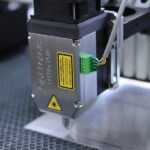Keratosis Pilaris, also known as “chicken skin,” is a common skin condition that affects millions of people worldwide. It is characterized by small, red or white bumps on the skin, typically on the arms, thighs, buttocks, and sometimes the face. These bumps are caused by a buildup of keratin, a protein that protects the skin from infections and other harmful substances. When the keratin builds up, it blocks the hair follicles, leading to the formation of these rough, bumpy patches. While KP is not harmful or contagious, it can be unsightly and cause discomfort or self-consciousness for those who have it.
The exact cause of KP is not fully understood, but it is believed to be related to genetics and dry skin. It is more common in individuals with a family history of the condition and tends to worsen in dry, cold climates. While there is no cure for KP, there are various treatment options available to help manage the symptoms and improve the appearance of the skin. These treatments range from topical creams and exfoliants to laser hair removal, which has been shown to be effective in reducing the appearance of KP bumps.
The Benefits of Laser Hair Removal for KP
Laser hair removal has become a popular treatment option for individuals with KP due to its ability to target and reduce the appearance of the bumps associated with the condition. The laser works by emitting a concentrated beam of light that is absorbed by the pigment in the hair follicles. This energy is then converted into heat, which damages the follicle and inhibits future hair growth. In the case of KP, the laser targets the hair follicles that are blocked by keratin buildup, helping to smooth out the skin and reduce the appearance of the bumps.
One of the main benefits of laser hair removal for KP is its long-lasting results. While other treatments such as exfoliants and creams may provide temporary relief, laser hair removal offers a more permanent solution. After a series of treatments, many individuals experience a significant reduction in the appearance of their KP bumps, leading to smoother, clearer skin. Additionally, laser hair removal is a non-invasive procedure that requires minimal downtime, making it a convenient option for those with busy lifestyles. With advancements in technology, laser hair removal has become safer and more effective than ever, making it an attractive option for individuals looking to improve the appearance of their KP.
Preparing for Laser Hair Removal Treatment
Before undergoing laser hair removal for KP, it is important to properly prepare for the treatment to ensure optimal results and minimize any potential risks. The first step in preparing for laser hair removal is to schedule a consultation with a qualified dermatologist or licensed laser technician. During this consultation, the provider will assess your skin and discuss your medical history to determine if you are a suitable candidate for the treatment. They will also explain the procedure in detail and answer any questions or concerns you may have.
In the weeks leading up to your laser hair removal treatment, it is important to avoid sun exposure and tanning beds, as this can increase the risk of complications such as burns or pigmentation changes. It is also recommended to avoid plucking, waxing, or electrolysis in the treatment area, as these methods can disrupt the hair follicles and interfere with the effectiveness of the laser. Shaving is typically allowed and may be necessary before each treatment session to ensure that the laser can effectively target the hair follicles. Additionally, it is important to follow any specific pre-treatment instructions provided by your provider, such as avoiding certain skincare products or medications that may increase sensitivity to light.
What to Expect During Laser Hair Removal
On the day of your laser hair removal treatment for KP, it is normal to feel some nervousness or anticipation. However, knowing what to expect can help ease any anxiety and ensure a smooth and successful experience. When you arrive at the clinic or spa, you will be greeted by your provider and taken to a private treatment room. They will review the treatment plan with you and answer any last-minute questions before beginning the procedure.
Before starting the laser hair removal treatment, your provider will clean and prepare the treatment area. They may apply a cooling gel or use a handheld device to help guide the laser over your skin. During the treatment, you will wear protective eyewear to shield your eyes from the bright light of the laser. As the laser is applied to your skin, you may feel a mild stinging or snapping sensation, similar to a rubber band being snapped against your skin. While this sensation can be uncomfortable for some individuals, it is generally well-tolerated and only lasts for a fraction of a second with each pulse of the laser.
The duration of each laser hair removal session will depend on the size of the treatment area and the density of hair growth. For smaller areas such as the arms or face, the treatment may only take a few minutes, while larger areas like the legs or back may require up to an hour. After each session, your provider will apply a soothing cream or gel to help calm any redness or irritation and provide aftercare instructions for you to follow at home.
Aftercare and Maintenance for Smooth Skin
After undergoing laser hair removal for KP, it is important to follow proper aftercare instructions to ensure that your skin heals effectively and maintains its smooth appearance. In the days following your treatment, you may experience some redness, swelling, or mild discomfort in the treated area. This is normal and should subside within a few days. To help soothe any irritation, your provider may recommend applying a gentle moisturizer or cool compress to the skin.
It is crucial to protect your skin from sun exposure following laser hair removal, as UV rays can increase the risk of pigmentation changes and other complications. This means wearing sunscreen with at least SPF 30 and avoiding prolonged sun exposure during peak hours. It is also important to avoid hot showers or baths, saunas, and strenuous exercise for at least 24 hours after your treatment to prevent excessive sweating and irritation.
In terms of maintenance, most individuals will require multiple sessions of laser hair removal to achieve optimal results for their KP. These sessions are typically spaced 4-6 weeks apart to target hair growth at different stages of the growth cycle. Over time, many individuals experience a significant reduction in their KP bumps and enjoy smoother, clearer skin. However, it is important to continue following a skincare routine that includes gentle exfoliation and moisturization to help maintain these results.
Before and After: Real Results of Laser Hair Removal for KP
For many individuals with KP, laser hair removal has been life-changing in improving the appearance of their skin and boosting their confidence. Before undergoing treatment, they may have felt self-conscious about wearing short sleeves or swimsuits due to their bumpy skin. However, after completing a series of laser hair removal sessions, they have seen remarkable improvements in their KP bumps and enjoy smoother, more even skin.
One example is Sarah, who had struggled with KP on her arms since she was a teenager. She had tried various creams and exfoliants with limited success before deciding to try laser hair removal. After completing six sessions over several months, Sarah noticed a significant reduction in her KP bumps and felt more comfortable showing off her arms in sleeveless tops. She no longer felt embarrassed about her skin and was thrilled with her results.
Another success story is Alex, who had been dealing with KP on his thighs for years. He was hesitant to wear shorts or go swimming due to his bumpy skin but decided to give laser hair removal a try after researching its benefits for KP. After completing eight sessions, Alex saw a dramatic improvement in his skin texture and felt more confident than ever in his appearance. He was grateful for the positive impact that laser hair removal had on his life.
Building Confidence with Smooth, Bump-Free Skin
The impact of laser hair removal on individuals with KP extends beyond just physical changes – it also has a profound effect on their confidence and self-esteem. Many people who have struggled with KP for years have experienced feelings of self-consciousness and insecurity about their appearance. However, after undergoing laser hair removal and seeing significant improvements in their skin texture, they feel more comfortable and confident in their own skin.
For some individuals, laser hair removal has allowed them to wear clothing that they previously avoided due to their bumpy skin. Whether it’s wearing short sleeves without feeling self-conscious or confidently rocking a swimsuit at the beach, these individuals are no longer held back by their KP bumps. They feel liberated from the constraints that their skin condition once imposed on them and are able to fully embrace their bodies.
In addition to physical changes, many individuals have reported feeling more confident in social situations after undergoing laser hair removal for their KP. They no longer feel the need to hide their arms or legs or constantly worry about what others may think of their skin. Instead, they are able to focus on enjoying themselves without being preoccupied by their appearance.
In conclusion, laser hair removal has proven to be an effective and life-changing treatment option for individuals with KP. By targeting the hair follicles that are blocked by keratin buildup, it helps smooth out the skin and reduce the appearance of bumps associated with this common skin condition. With proper preparation, aftercare, and maintenance, many individuals have seen significant improvements in their KP bumps and enjoy smoother, clearer skin as a result of laser hair removal. This has not only improved their physical appearance but also boosted their confidence and self-esteem, allowing them to fully embrace their bodies without feeling self-conscious about their skin condition.






